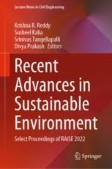Search
Search Results
-
Use of wastewater alum-coagulation sludge as a phosphorus fertiliser – a mini review
The use of aluminium (Al) salts, particularly alum, in coagulation is a widespread and conventional treatment method for eliminating pollutants,...

-
Valorisation of alum sludge to produce green and durable mortar
Alum sludge is a typical by-product of drinking water treatment processes. Most sludge is disposed of at landfill sites, and such a disposal method...

-
Advanced natural hydrated iron-alum oxides cation exchange resin for simultaneous phosphate and hardness removal
In this study, a hydrated iron-alum oxides-contained cation exchange resin (HIAO/225H) was synthesized for the first time from natural alum-ferric...

-
Performance of water-extracted Leucaena leucocephala seeds as coagulant and alum in treating aquaculture effluent: effect of dosage, rapid mixing speed, and settling time
This study aimed to evaluate the effectiveness of plant-based coagulant extracted from Leucaena leucocephala seeds compared with alum in removing...

-
A comparison of the efficiency of electrocoagulation and alum NPs for tannic acid removal from aqueous solutions
This study aimed to optimize the removal of tannic acid (TA) from simulated wastewater by applying the electrocoagulation (EC) process and the alum...

-
Scaling-up Studies on Electrolysis Using Cation Exchange Membrane for Alum Recovery
Water treatment sludge from coagulation process in Indonesia is generally directly discharged into rivers. This condition may negatively affect the...

-
Alum sludge as an adsorbent for inorganic and organic pollutants removal from aqueous solutions: a review
One of the first stages of water treatment is the coagulation process, a side effect of which is the formation of huge amounts of sludge, which is...

-
Using electro- and alum coagulation technologies for treatment of wastewater from fruit juice industry in New Damietta City, Egypt
Electrocoagulation technology is being increasingly used to treat various types of wastewater over the last several years. This study aimed to...

-
Hybrid Baffled Flocculator in Benha Water Treatment
A hybrid baffled flocculator (HBF) is employed in this study in an effort to lower the footprint area and enhance the quality of drinking water. The...

-
Cr(VI) Removal Using the Combination of the Cr(VI)-Resistant and Cr(VI)-Reducing Biofilm and the Alum-Polyacrylamide
This paper describes the removal of Cr(VI) using the combination of bacterial reduction of Cr(VI) to Cr(III) by wood husk–packed column containing...

-
Study of Orange and Banana Peels as Natural Coagulants
Turbidity is a characteristic related to the concentration of suspended solids particles in water and has been adopted as an easy and reasonably...
-
Comparative Evaluation of Glycine max L. and Alum for Turbid Water Treatment
Disadvantages associated with chemical coagulants and goal of sustainable development have shifted the focus to natural plant-based coagulants. Raw...

-
Zeolite-based adsorbent from alum sludge residue for textile wastewater treatment
Highly efficient low-cost alum sludge-based sorbents, (termed as AS-Sorbents), derived from alum sludge by-product waste have shown a significant...

-
Integrating alum sludge with waste-activated sludge in co-conditioning and dewatering: a case study of a city in south France
The unique geographical location of waterworks and wastewater treatment plant (WWTP) in Graulhet (France) profited the environmental resource...

-
Chemical Lake Restoration Methods: From Alum to Innovative Composite Materials
This chapter evaluated a spectrum of chemical restoration approaches of eutrophic water systems, highlighting the key role of internal nutrient loads...
-
Phytotoxicity and Cost-effectiveness Analysis of Palm Oil Wastewater Treated with Magnetic Cationic Starch Flocculant
Toxicological issue on wastewater treated with conventional and starch modified with synthetic cationic monomers flocculants has become a major...

-
Groundwater chemistry affected by trace elements (As, Mo, Ni, U and V) from a burning alum shale waste deposit, Kvarntorp, Sweden
Worldwide, black shales and shale waste are known to be a potential source of metals to the environment. This project demonstrates ongoing weathering...

-
Synthesis of a New Flocculant from Waste Polystyrene: Plastic Recycling Industry Wastewater Treatability
HDPE (high-density polyethylene), LDPE (low-density polyethylene), PET (polyethylene terephthalate), and PP (polypropylene) plastic washing...

-
Effective turbid water treatment using natural eco-friendly coagulants derived from oat and onion seeds
Conventional chemical coagulants are used for potable water treatment, which requires unsustainable mining and transformation of raw materials for...

-
Treatment of laundry wastewater using extracellular polymeric substances (EPS)
The problem of management and treatment of wastewater from commercial laundries is a matter of concern. The present study provides an effective and...

